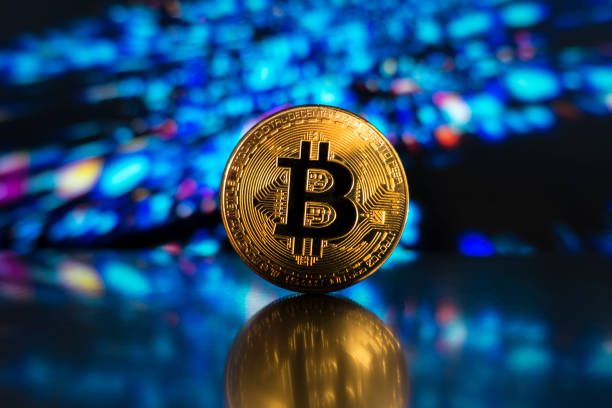Bitcoin Scams: How to Spot and Avoid Them
Introduction
Bitcoin and other cryptocurrencies have gained massive popularity, attracting both investors and scammers. With millions of dollars lost to fraudulent schemes, knowing how to identify and avoid Bitcoin scams is crucial for protecting your investments. In this guide, we’ll explore the most common Bitcoin scams and how to stay safe in the crypto world.
Common Bitcoin Scams and How They Work
1. Ponzi and Pyramid Schemes 🏴☠️
These scams promise high returns with little or no risk by using money from new investors to pay older ones. Eventually, they collapse, leaving most investors with huge losses.
🔴 Red Flags:
✔ Promises of guaranteed profits.
✔ Referral-based earnings (you must invite others to make money).
✔ Lack of transparency about how profits are generated.
💡 How to Stay Safe:
✔ Be cautious of any investment promising unrealistic returns (e.g., “Double your Bitcoin in 24 hours”).
✔ Research the company’s history, founders, and business model.
2. Fake Bitcoin Exchanges and Wallets 🔓
Scammers create fake trading platforms or wallets that look legitimate to steal your funds. Once you deposit Bitcoin, the site disappears.
🔴 Red Flags:
✔ The exchange is not regulated or lacks reviews.
✔ Offers huge bonuses for signing up.
✔ Poor website design, typos, or suspicious domain names.
💡 How to Stay Safe:
✔ Use trusted exchanges like Binance, Coinbase, or Kraken.
✔ Verify the exchange’s URL and ensure it uses HTTPS security.
✔ Read online reviews from trusted sources before signing up.
3. Phishing Attacks 🎣
Scammers send emails, messages, or pop-ups that look like official platforms (e.g., Binance, Coinbase) to steal your login credentials.
🔴 Red Flags:
✔ Emails asking you to “verify your account” urgently.
✔ Fake websites with slight spelling variations (e.g., “coinbase.com” vs. “coinbàse.com”).
✔ Suspicious links asking for your private keys or passwords.
💡 How to Stay Safe:
✔ Never enter your details on unknown links.
✔ Always verify the website URL before logging in.
✔ Enable two-factor authentication (2FA) on all accounts.
4. Fake Celebrity Endorsements 🌟
Scammers create fake news articles or social media posts claiming that celebrities like Elon Musk or Jeff Bezos are giving away Bitcoin. These scams trick victims into sending BTC with the promise of getting double the amount back.
🔴 Red Flags:
✔ “Send 1 BTC and get 2 BTC back instantly!”
✔ Fake social media profiles with misspelled names.
✔ Comments on posts filled with fake success stories.
💡 How to Stay Safe:
✔ No celebrity will ever give away free Bitcoin.
✔ Verify announcements on official sources (e.g., Tesla’s website, Elon Musk’s verified Twitter account).
✔ Report scam posts to social media platforms.
5. Bitcoin Giveaway Scams 🎁
Scammers post fake giveaways on Twitter, YouTube, or Telegram, claiming you must send Bitcoin to receive a bigger amount back.
🔴 Red Flags:
✔ “Limited-time offer! Send BTC to this address and get double back!”
✔ Fake countdown timers creating urgency.
✔ Comments filled with fake testimonials saying it worked.
💡 How to Stay Safe:
✔ Never send Bitcoin to unknown addresses.
✔ No legitimate company or person will ask for BTC upfront for a giveaway.
✔ Verify accounts before engaging in any promotions.
6. Malware and Ransomware 🦠
Some scams use malware to steal your private keys, giving hackers full access to your wallet. Others lock your files and demand Bitcoin as ransom.
🔴 Red Flags:
✔ Unexpected downloads or pop-ups asking for permission.
✔ Emails with suspicious attachments or links.
✔ Software asking for your private keys.
💡 How to Stay Safe:
✔ Install antivirus software and keep your system updated.
✔ Never download files from unknown sources.
✔ Use cold wallets (hardware wallets) for storing large amounts of BTC.
How to Spot a Bitcoin Scam in General
✔ Unrealistic promises – No legitimate investment can guarantee high profits with zero risk.
✔ No transparency – If a project hides its team or roadmap, be cautious.
✔ Requests for private keys – Never share your private key with anyone.
✔ High-pressure tactics – Scammers often create a sense of urgency to trick victims.
✔ Poor website quality – Check for grammatical errors, low-quality design, and unprofessional content.
What to Do If You’re a Victim of a Bitcoin Scam
- Stop sending money immediately.
- Report the scam to authorities (e.g., FTC, local cybercrime units).
- Warn others by leaving reviews or posting on social media.
- Use blockchain explorers to track stolen funds (sometimes law enforcement can help).
- Improve security – Change passwords, enable 2FA, and move funds to a safer wallet.
Conclusion
Bitcoin scams are everywhere, but with proper awareness and security measures, you can protect your investments. Always be skeptical of too-good-to-be-true offers, and remember:
🚨 If it sounds too good to be true, it probably is! 🚨
✔ Stay informed.
✔ Use trusted platforms.
✔ Never share your private keys.
🔐 Stay safe and keep your Bitcoin secure! 🔐
